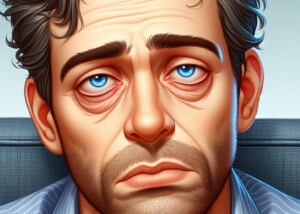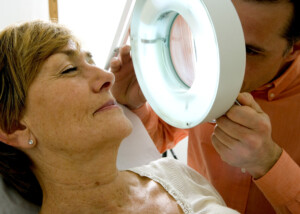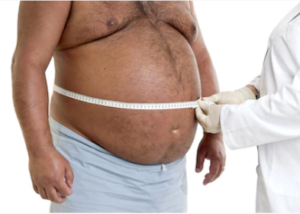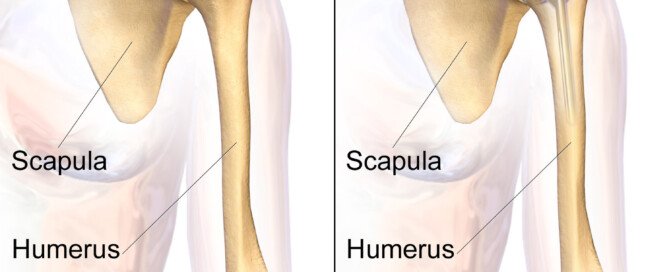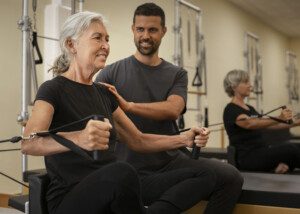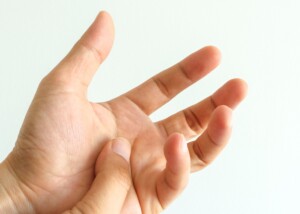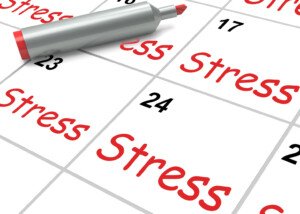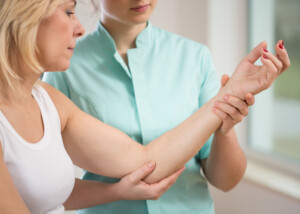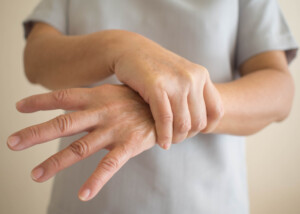Can Sleep Apnea Lead to Death from Cancer?

If you have sleep apnea, you’re more likely to die from cancer, not to mention other causes of death.
In addition to a higher risk of death from cancer, sleep apnea is linked to heart disease, high blood pressure, depression and just an earlier mortality in general.
The University of Wisconsin School of Medicine and Public Health announced results in 2012 of a study that ties sleep apnea to death caused by cancer.
• Sleep apnea is associated with a five times higher incidence of cancer mortality.
• Previous studies on animals have yielded similar findings.
• The precise mechanism behind the link is not known, and a causal relationship has not been established.
Can sleep apnea cause cancer?
Increased risk of death from cancer is one thing, but what about OSA actually leading to cancer?
“The process by which OSA leads to cancer is similar to why it causes clogged arteries,” says Dr. Praveen Bhatia, MBBS, a consultant physician in respiratory and general medicine in Stockport, UK.
“Intermittent hypoxia (IH) causes low oxygen levels followed by reoxygenation repeatedly overnight.
“This leads to systemic inflammation and the formation of reactive oxygen species.
“IH also increases the activity of a growth factor called hypoxia-inducible factor-1 and reduces antioxidants in the body which normally prevent damage to cells and DNA.4
“These factors lead to DNA damage, which is a major factor in developing cancer.
“This damage to DNA causes genetic mutations, some of which are proto-oncogenes (genes which cause normal cells to become cancerous when mutated), leading to the rapid growth of mutated cancer cells.”
Though it’s still a far reach to outright declare OSA as a major risk factor for developing cancer, one thing is for sure:
Untreated sleep apnea absolutely can cause coronary artery disease, chronic heart failure, atrial fibrillation and high blood pressure, not to mention the daytime issues of fatigue and not feeling refreshed, irritability, difficulties with concentration and a heightened risk of motor vehicle accidents due to drowsiness.
- Cao, Yan, Ning et al. “Cancer and obstructive sleep apnea: An updated meta-analysis.” Medicine; March 2022;101:e28930.
 Dr. Bhatia has worked as a respiratory consultant in the Northwest of England since 2006. He is well-published in respiratory medicine journals and books and has senior roles in several medical journals. He has previously worked in the field of sleep medicine and has a special interest in obstructive sleep apnea.
Dr. Bhatia has worked as a respiratory consultant in the Northwest of England since 2006. He is well-published in respiratory medicine journals and books and has senior roles in several medical journals. He has previously worked in the field of sleep medicine and has a special interest in obstructive sleep apnea.
 Lorra Garrick has been covering medical, fitness and cybersecurity topics for many years, having written thousands of articles for print magazines and websites, including as a ghostwriter. She’s also a former ACE-certified personal trainer.
Lorra Garrick has been covering medical, fitness and cybersecurity topics for many years, having written thousands of articles for print magazines and websites, including as a ghostwriter. She’s also a former ACE-certified personal trainer.
.
Top image: Shutterstock/Lightspring
Source: atsjournals.org/doi/full/10.1164/rccm.201201-0130OC
What Causes a Single Isolated Pore to Become Clogged ?

A single, isolated pore on your face can become clogged due to a number of reasons, but a type of skin cancer can also look like a clogged pore.
On your face are pores, and they are particularly visible in the following areas: between and slightly above the eyebrows, the nose, immediately below the nostrils, the cheeks right next to the nostrils, right above and below the lips, and the chin.
The most common area for bunches of pores to be simultaneously clogged (“blackheads”) is the bulbous portion of the nose.
However, it’s possible for a single pore, in a field or among a cluster of pores, to be clogged.
This will make it stand out more to the person who examines their face.
That isolated very tiny dark spot will get their attention. They may wonder, “What’s THAT?”
“There are many reasons why you may have a single ‘clogged’ pore,” says Dr. Janet Prystowsky, board certified dermatologist in New York, NY, with 30+ years’ experience.
“You may have a scarred pore, a follicular cyst, or potentially a basal cell carcinoma.”
You may also just, by chance, have an isolated clogged pore among others that are not congested. The skin on your face isn’t perfect.
But let’s back up a moment: basal cell carcinoma.
This is a skin cancer. Do not panic. It does not metastasize and is not fatal when treated.
When untreated it causes local tissue destruction, and in theory it can cause serious problems if the destruction encroaches critical tissue such as the optic nerve.
It takes many years for a basal cell carcinoma to cause local destruction. In fact, my brother had a basal cell carcinoma on his face go untreated for five years and it still was only the size of a dime and flat. You can’t even tell where on his face it was removed.
“A scarred pore may look bigger than a regular pore due to scar tissue inside the pore,” continues Dr. Prystowsky. “Squeezing and poking this pore may cause more scar tissue to develop!
“Follicular cysts are firm balls of foul-smelling dead skin cells inside of a pore.
“Do not pop these cysts! Popping may result in the dead skin cells getting into your tissues below the skin surface, which is painful and irritating.
“Sometimes a basal cell carcinoma can look like a clogged pore. If you’re worried that your ‘clogged’ pore is a basal cell carcinoma then you should contact your dermatologist for a biopsy.”
Lastly, and this is BY FAR the least likely cause – out of the possible causes mentioned here – of what appears to be a blackhead, is a very early melanoma.
Two-thirds of melanomas arise in the absence of a mole. They don’t appear from nothing to pencil-eraser-sized overnight.
Melanomas that arise in the absence of a mole will start out, as any new lesion will, as just a handful of cells.
As the cells multiply, they will eventually become barely visible to the naked eye when viewed up close.
At this point it may not be detected during a casual visual scan of your face.
But as it continues to grow, it will get to the size of a typical small pore – and may resemble a clogged pore.
It may even be the same color as your normal clogged pores.
If it’s melanoma, it WILL increase in size over time – enough so to be noticed over several months. But don’t wait even two months to see what happens.
Have a dermatologist examine what you hope is only an isolated clogged pore.

In combination with her focus on early skin cancer detection and removal, Dr. Prystowsky provides a wide range of revitalizing and rejuvenating treatments.
 Lorra Garrick has been covering medical, fitness and cybersecurity topics for many years, having written thousands of articles for print magazines and websites, including as a ghostwriter. She’s also a former ACE-certified personal trainer.
Lorra Garrick has been covering medical, fitness and cybersecurity topics for many years, having written thousands of articles for print magazines and websites, including as a ghostwriter. She’s also a former ACE-certified personal trainer.
.
Top image: Shutterstock/Evgeny Atamanenko
Upper Arm Itches Only at Night? Most Likely Cause & Solution

If your upper arm or shoulder itches only at night especially in bed, the cause might not be related to your skin.
First check to see if there’s anything going on with your skin in the area that keeps itching. (more…)
Which Causes More Disease: Poor Diet or Lack of Exercise ?

As bad as a lack of exercise is to the body, the million-dollar question is if a bad diet causes more disease and illness than being lazy and sedentary. (more…)
How Much Should a Parent Take Care of Child’s Puppy?
What’s holding you back from getting your child a puppy?
Is it REALLY because you think YOU’LL end up caring for it?
There’s actually another reason, and you probably know what it is.
“But Mama, why can’t I have a puppy?”
“Because I’m the one who’ll end up taking care of it. The answer is no!”
Your Child Is Begging for a Puppy. You Don’t Want to Do All the Work.
“I feel that the majority of the time a parent says this is when they do not want a pet themselves,” says Dr. Tia Kern-Butler, a licensed psychologist for over 20 years who treats a broad range of issues including relationship problems and behavioral issues of children and adolescents.
“And this excuse is exactly that…a convenient excuse. Parents know they’re going to have the majority of the responsibility.”
To the parent, this should be a no-brainer. After all, what parent in his or her right mind could actually think that a 10-year-old is capable of being the primary caregiver to a dog? A hamster, maybe, but not a dog!
Some parents do get the dog yet still think the child should take on more of the responsibility than what is appropriate or feasible for that child’s age.
And in some cases, deep down, the parent may like the idea of a warm furry thing around the house to cuddle, but does not want the responsibility.
Can’t parents just be honest with their kids?
A parent may be unsure about having a pet, but if the parent truly wanted a dog, they would not be telling their child, “We’re not getting a dog because I’m the one who’s gonna end up cleaning the messes,” points out Dr. Kern-Butler.
“A parent who wants the pet, gets the pet,” says Dr. Kern-Butler. “It’s in the case where the child wants a pet — but the parent does not — that this presents a dilemma.”
If you don’t want a dog (don’t like them, think they smell, don’t want to hassle with fleas, barking, expenses), then just tell your child the truth: “I am not a dog person,” or whatever you think will work best.
Otherwise, by bringing up the concept of caretaking, you’ll prolong the issue and make it very enticing for the child (especially an older and feisty one) to repeatedly argue their case.
But if you flat-out admit that you don’t like dogs…your child will have little room for negotiation attempts.
How much should the parent take care of the puppy?

“I agree, no child is going to have 100% of the pet-care duties,” says Dr. Kern-Butler.
“If a parent wants their child to have the benefits of pet ownership, then a clear discussion about reasonable expectations should occur.
“A parent should use good judgement in the type of pet and care required in regard to the child’s age.
“For example, a hamster is easier for a younger child to care for than a dog. And if a parent is absolutely against caring for the pet themselves, they should not get the pet.
“Yes, it’s sad that the child misses out on the benefits of pet ownership, but it’s in the animal’s best interest in this case.”
What about parents on the fence?
As previously mentioned, there may be some parents who wouldn’t mind having a dog, but the idea of caring for it is daunting.
A dog provides unconditional love to a child – in that unlike the child’s siblings and even parents, an animal will not criticize or judge.

A dog will also teach kids responsibility — even if the pet related chores are only 10 percent of what the parent must do. Ten percent to a 10-year-old is definitely enough to ingrain responsibility.
So if you’re on the fence about dog ownership, you’ll want to consider the aforementioned points.
Kids can always share in the caretaking. For instance, a seven-year-old shouldn’t be walking the dog without supervision, but a seven-year-old is capable of giving it playtime and pouring water into a bowl (at your command).
If your teen wants a puppy, the amount of responsibility goes up, but the parent needs to accept the fact that a teen may not always clean up “accidents” or remember to walk the animal.
Parent Taking Care of the Dog
Once you’ve come to terms with this reality, it won’t be so aggravating when your child forgets to fill the bowl or frets when it’s time to walk the dog.
An example of delegating the caretaking would be that of assigning one daily task to the child such as keeping the water bowl full, or letting the dog out every morning (if the yard is enclosed) to romp around and do its business and then remembering to let the dog back in after a set time range.
You can also dictate more sporadic responsibilities such as giving the dog a bath or grooming it.
Daily tasks, however, cannot be dumped entirely on a juvenile.
Bringing a puppy or dog into the household means you’ll be taking on an additional family member.
A child should not be expected to take 100 percent care of this new family member any more than if this new family member were a human.
 Currently in private practice Dr. Kern-Butler spent 10 years as the lead child and adolescent psychologist with Winter Haven Hospital and served as the mental health liaison for the Children’s Advocacy Center for 14 years.
Currently in private practice Dr. Kern-Butler spent 10 years as the lead child and adolescent psychologist with Winter Haven Hospital and served as the mental health liaison for the Children’s Advocacy Center for 14 years.
Professionalpsychologyofpinellas.com/about-me
 Lorra Garrick has been covering medical, fitness and cybersecurity topics for many years, having written thousands of articles for print magazines and websites, including as a ghostwriter. She’s also a former ACE-certified personal trainer.
Lorra Garrick has been covering medical, fitness and cybersecurity topics for many years, having written thousands of articles for print magazines and websites, including as a ghostwriter. She’s also a former ACE-certified personal trainer.
Shoulder Replacement Surgery Results in Old vs. Young Patients
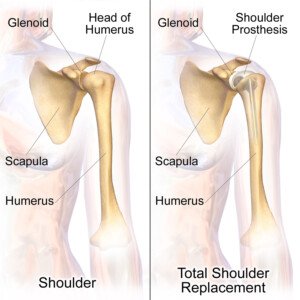
An oddball discovery is that older people experience better results from shoulder replacement surgery than do young patients.
At first, you’d think that the opposite would be true, that the younger people would have more favorable outcomes. (more…)
Finger Tingling from MS vs. Carpal Tunnel Syndrome

Both multiple sclerosis and carpal tunnel syndrome can cause tingling in the fingers.
However, the tingling of MS is more likely to occur in the forearm when it’s in an upper extremity. But carpal tunnel syndrome can also cause some tingling in the forearm. (more…)
Can ALS Cause Hand Symptoms that Mimic Carpal Tunnel Syndrome?

Unfortunately, early symptoms of ALS can masquerade as symptoms of carpal tunnel syndrome.
If you wait long enough and have ALS, you’ll eventually suffer the progressive symptoms of this neurodegenerative disease. (more…)
The Worst that Can Happen if Carpal Tunnel Is Never Treated
If you don’t get treatment for your carpal tunnel syndrome, it may spontaneously improve, OR, you may end up with permanent pain and grip weakness.
The tricky thing here is that you can’t tell for sure which category you’ll end up in.
So why take the chance? (more…)
Weightlifting Guidelines for Carpal Tunnel Syndrome: Pulling



